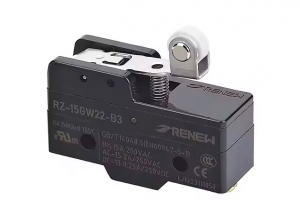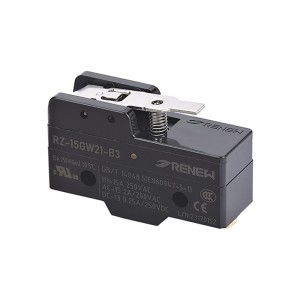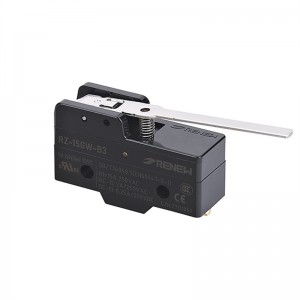Introduction
Hinge lever micro switches continue to play a central role in industrial automation, automotive electronics and smart home by virtue of their high reliability, shock resistance and flexible adaptability. This article combines industry dynamics and technology trends to summarize their development, technical characteristics and future direction, providing practitioners with comprehensive insights.

Development History
The development of micro switches can be traced back to the early 20th century, initially manually operated mechanical switches, mainly used for basic control of industrial equipment, simple structure but low reliability. After World War II, with the development of electronic technology, microswitches began to be used in home appliances and automotive applications, such as radios, televisions, car door switches, etc. In the 1960s and 1970s, advances in semiconductor technology drove the miniaturization and high reliability of microswitches. Lever-type microswitches began to integrate rollers, springs and other structures to adapt to complex mechanical movements. Japanese Omron, German Marquardt and other companies launched standardized products, mechanical life exceeded one million times, and became the standard for industrial automation. Entering the 21st century, the Internet of Things (IoT) and the surge in demand for new energy vehicles further boosted the demand for microswitches, and the lever-type microswitch, as one of the types, was developed along with the diversification of the application scenarios. Lever-type switches developed to high precision and high temperature resistance (e.g., ceramic-based contacts) Development, and incorporate pressure sensing technology to realize tactile feedback function, applied to robot joints and intelligent automobile control system mentioned, the U.S., Germany, Japan's enterprises in the mid-end and high-end market dominated, while Chinese enterprises in recent years is also penetrating into the mid-end and high-end market.



Category
Hinge roller lever micro switch can reduce friction due to its roller structure, support multi-directional force and strong impact resistance. The long hinge lever micro switch has a long stroke and is suitable for large displacement detection. Short hinge lever micro switch have fast response time and high accuracy. Composite lever micro switch integrates roller and spring cushioning, combining shock resistance and sensitivity.
Conclusion
From the “safety guard” of industrial machinery to the “nerve endings” of intelligent equipment, the technological evolution of lever-type microswitches maps the upgrading trajectory of the manufacturing industry. In the future, with the in-depth integration of new materials and intelligent technology, this classic component will continue to break through the performance boundaries, empowering the global industrial chain to move forward in the direction of efficiency, reliability and sustainability.
Post time: Apr-03-2025






